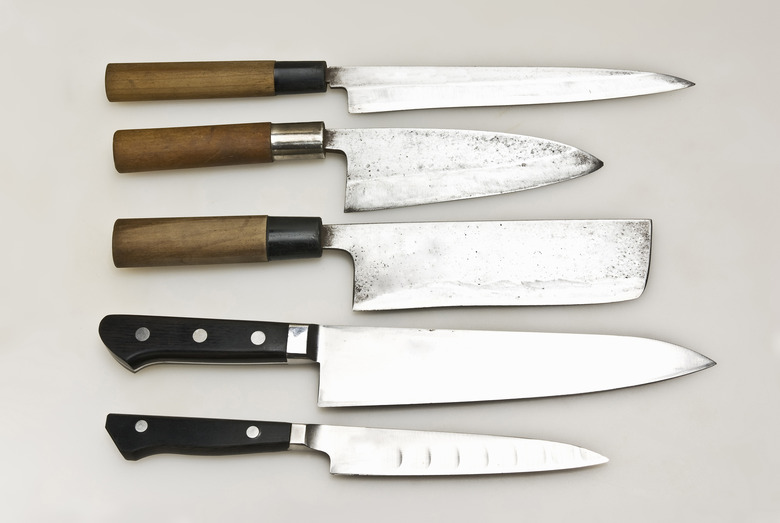What Is The Difference Between Western And Japanese Knifes?
When it comes to basic cooking methods, many of us home cooks own Western-styles knives that we use for everyday kitchen tasks. There's nothing wrong with this; in fact, these blades are actually best used is certain situations, but over the years, serious cooks, successful chefs, and even the iconic Alton Brown have become extremely interested in Japanese cutlery.
Since knives come in many different sizes, shapes, weights, and thicknesses anyway, you have to wonder: What's the difference between Western and Japanese blades?
When it comes to Western knifes, they tend to have a geometric shape, are on the heavier side, and have a thick blade. These traits make them great tools for cutting heavy and strong ingredients — foods like melons, potatoes, and lobsters. The heaviness of Western cutlery also makes these knives good for chopping too. Because they are also so durable, they will last forever if taken care of properly.
On the contrary, Japanese knives generally have a long and slim shape, are lightweight, and have slim blades, making them ideal for precise work, such as finely slicing vegetables or carving big pieces of meat and fish. Since the blades are thin and delicate, however, they are more susceptible to chipping, so make sure to use them with care.
If you want to step up your knife game, invest in a Nenohi, which seems to be Alton Brown's blade of choice. Regardless of which cutlery you find that suits your personal preference, put those knife skills to work and try these 21 quick and delicious weeknight grilling ideas.
